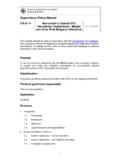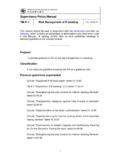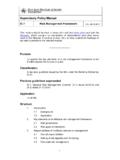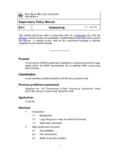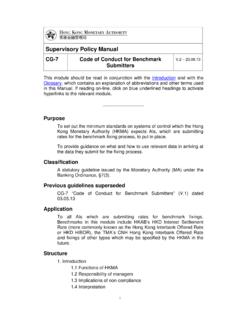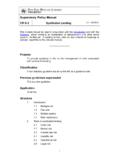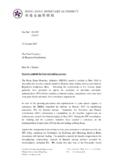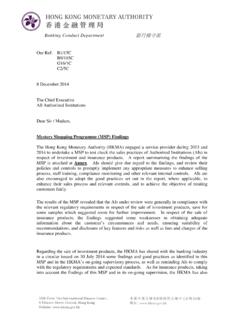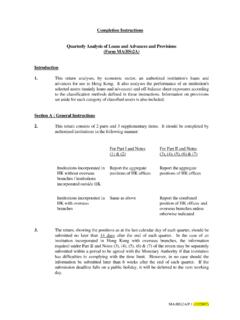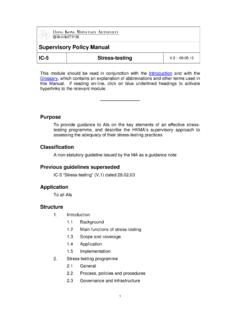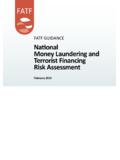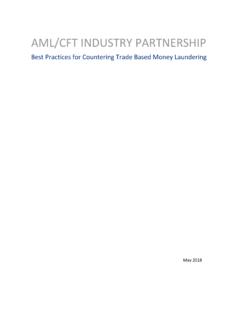Transcription of Guidance Paper on Anti-Money Laundering Controls over Tax ...
1 Guidance Paper Anti-Money Laundering Controls over Tax Evasion March 2015 2 Guidance Paper on Anti-Money Laundering Controls over Tax Evasion March 2015 1 Background Increasing levels of globalisation have facilitated the ease by which taxpayers may manage investments, particularly through financial institutions outside their country of residence. The Organisation for Economic Co-operation and Development ( OECD ) has assessed that vast amounts of money are kept offshore and are untaxed.
2 Tax evasion1 has become a serious problem for jurisdictions all over the world, which have a shared interest in maintaining the integrity of their financial and tax systems. Critical in the fight against tax evasion is the requirement for a robust set of Anti-Money Laundering ( AML ) control systems, including customer due diligence ( CDD ) procedures, which identify risks of tax evasion and lead to the application risk-based measures to manage those risks. Hong Kong is fully committed to safeguarding its financial system from being used to facilitate tax evasion.
3 It has long been the position of the Hong Kong Monetary Authority ( HKMA ) that it is important for authorized institutions ( AIs ) to act prudently in the conduct of their customer relationships and not, knowingly or deliberately, aid and abet tax evasion, or facilitate the Laundering of the proceeds of tax evasion, by their customers. The HKMA has communicated the clear requirement that AIs should put in place appropriate systems and Controls to combat tax evasion in circulars dated 17 June 2009 and 7 June 2013, and highlighted those requirements during AML seminars held in 28 and 30 October 2013 (relevant materials could be found on the HKMA s website: ).
4 This Guidance Paper aims to assist AIs in meeting the legal and regulatory obligations under the Anti-Money Laundering and Counter-Te rrorist Financing (Financial Institutions) Ordinance ( AMLO ) and implement effective measures to mitigate their money Laundering ( ML ) risks in respect of tax evasion. Although this Paper does not form part of the Guideline on Anti-Money Laundering and Counter-Terrorist Financing (for Authorized Institutions) ( AMLO 1 OECD defines tax evasion in its glossary as [a] term that is difficult to define but which is generally used to mean illegal arrangements where liability to tax is hidden or ignored, the taxpayer pays less tax than he is legally obligated to pay by hiding income or information from the tax authorities.)
5 3 Guidance Paper on Anti-Money Laundering Controls over Tax Evasion March 2015 Guideline ), the HKMA expects every AI to give full consideration to the adoption of the practices described in this Paper , where necessary, to improve their AML and counter-terrorist financing ( CFT ) systems, taking into account their ML risks in respect of tax evasion. The contents of this Guidance Paper are neither intended to, nor should be construed as, an exhaustive list of the means of meeting AIs statutory and regulatory requirements, and should be read in conjunction with the existing and applicable laws, guidelines and Guidance papers.
6 4 Guidance Paper on Anti-Money Laundering Controls over Tax Evasion March 2015 2 Tax Evasion Legal Status in Hong Kong The AMLO2 defines money Laundering as an act that is intended to have the effect of making the proceeds of an indictable offence not to appear so 3. Tax evasion constitutes an indictable offence in Hong Kong4, therefore the requirements stipulated in the AMLO and AMLO Guideline are equally applicable to tax evasion. Similar to other ML risks, AIs should ensure that tax evasion-related risks are adequately assessed and where they exist, care is taken to ensure that AML Controls can effectively mitigate these risks.
7 In view of the above, the statutory requirement5 to make a disclosure to the Joint Financial Intelligence Unit ( JFIU ), where AIs have knowledge or suspicion of any tax evasion-related activity is also applicable. Governance and Risk Culture The HKMA expects senior management to take responsibility for ML risk management, which includes understanding the risks that may arise from tax evasion and ensuring the risks are managed effectively by establishing a strong AML compliance culture6.
8 This involves senior management setting the tone from top, which in practical terms means developing a clear risk appetite, while also embedding a culture of ethical behaviour at both the institution and individual staff levels in which the failure to effectively manage and mitigate ML risks is not acceptable. 2 AMLO (Cap. 615) came into effect on 1 April 2012 3 See Schedule 1 to the AMLO 4 Section 82 of the Inland Revenue Ordinance, Cap. 112 5 Section 25A of the Organized and Serious Crimes Ordinance, Cap.
9 455 6 See HKMA circular dated 25 April 2013 5 Guidance Paper on Anti-Money Laundering Controls over Tax Evasion March 2015 Staff members of an AI should act with integrity, due skill, care and diligence in carrying out their AML/CFT roles and responsibilities, and AIs should take steps to ensure that employees fully recognize their personal accountability in this respect7. AIs are expected to monitor staff adherence during the course of their work and establish procedures for investigating any apparent instances of unethical behaviour and failure to meet compliance requirements.
10 AIs should also, for example, manage the risk of staff being rewarded for taking unacceptable risks by ensuring that standards of ethical behaviour and poor compliance records are taken into account in staff appraisals and performance-related variable remuneration8. Risk Assessment The Road Map of the AML/CFT System Money Laundering and terrorist financing ( ML/TF ) risk assessment is central to the design of AML/CFT policies, procedures and Controls ( AML/CFT system ) and is essential to the effective application of the risk-based approach.
